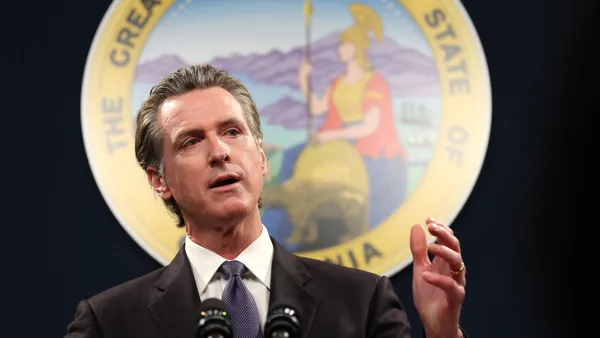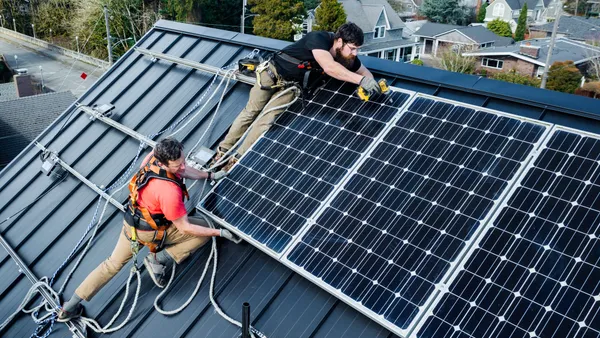Dive Brief:
- Minnesota lawmakers included multiple energy storage provisions in the Omnibus Jobs and Energy Bill when they approved it May 24, including requiring utilities to consider batteries as a resource in their long-term planning efforts.
- The bill also directs the Minnesota Department of Commerce to conduct an energy storage cost-benefit analysis, in order to determine the value of adding the resource to the electric grid.
- Several energy provisions failed to advance in Minnesota's legislative session, including a 100% carbon free proposal by Gov. Tim Walz, DFL. The bill would have required the state's utilities to deliver emissions-free energy by 2050.
Dive Insight:
The omnibus appropriations bill, which includes $150,000 for the Commerce Department "to conduct an energy storage systems cost-benefit analysis," will yield much-needed insight into how batteries can bring value to Minnesota's electrical grid, storage advocates said as they praised its passage.
The legislation "paves the way for a more resilient, efficient, sustainable, and affordable grid," Energy Storage Association CEO Kelly Speakes-Backman said after it passed.
The system analysis will help to "quantify the value of adding storage to the grid and provide information on how much energy storage is needed to meet current and future demands on the Minnesota electric system," she added.
The bill also allows utilities to petition to recover costs associated with implementing an energy storage pilot project. The legislature identified storage pilot goals, which include controlling frequency or voltage, mitigating transmission congestion, providing emergency power supplies during outages, reducing curtailment of existing renewable energy generators and reducing peak power costs.
Xcel Energy is the largest electric utility operating in Minnesota, and is supportive of Walz's carbon-free vision. Last year, the company committed to bringing its entire operation to 100% carbon-free generation by 2050. The utility is also planning to reduce emissions 80% from 2005 levels by 2030.















